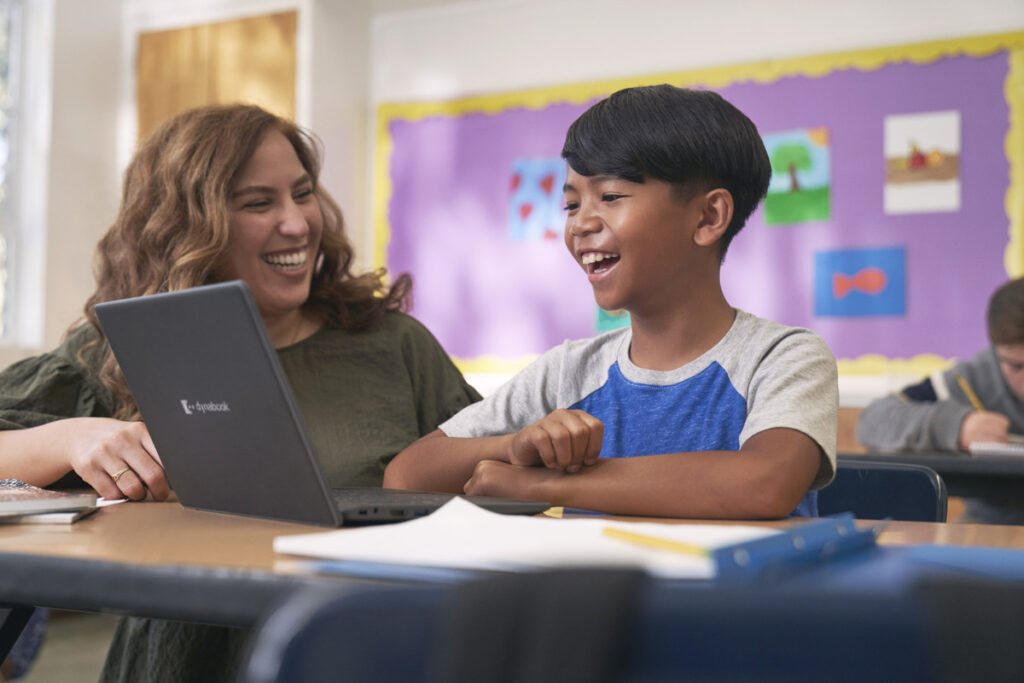Is there something that you are anxious about? Perhaps just saying “I am scared of _____” could help. Researchers at UCLA found that when afraid, people showed fewer signs of reactivity after verbalizing their emotions. It’s a technique often referred to as “naming the monster,” and it can have a profound effect in reducing anxiety in the classroom: for both students and staff.
Check-ins invite students to explore and normalize their emotions and feelings. They also help students recognize emotions in their peers and provide an opportunity to build empathy so that they can better navigate relationships and engage more deeply with the world around them. Benefits extend to educators and staff, helping them to check the temperature of their school’s ecosystem while ensuring that their own needs are being met.
To make check-ins more impactful for students and simpler for educators, the Microsoft Education team offers Microsoft Reflect, a dynamic check-in app in Teams for Education, which supports deeper connection, expression, and learning.
Supporting students
Reflect is a meaningful way to help students broaden their emotional vocabulary, recognize and process their emotions more effectively, and connect more fully with their peers. Using it for regular check-ins can:
- Amplify student voice
- Promote a growth mindset through evaluation of effort
- Build self-management skills so that students feel more ownership in their learning
- Support CASEL competencies such as self-awareness and responsible decision-making
Reflect features “Feelings Monsters” depicting more than 50 emotions. Students can use these to visualize their feelings and better understand and communicate their own emotions. These visualizations can also instigate conversations about what causes pleasant and unpleasant feelings, how these feelings affect learning, and how to navigate them.
Reflect also provides a safe space for students to practice asking for help in areas where they feel challenged. Since educators are the only individuals who can see reflections, students never have to worry about their peers having access to their check-ins.
Empowering Educators
Reflect is built directly into Teams, a digital learning hub that unites assessments, communication, and collaboration. Educators love how easy it is to check-in with students and receive valuable feedback on student well-being so they can build a healthy classroom community. Reflect can either enhance an existing social and emotional check-in routine, or help educators begin a new one.
Reflect is also a valuable tool for staff check-ins. Create check-ins for staff teams to help build a school-wide culture of trust and transparency. Team owners can simply check Reflect in the general channel of their staff team, select a question from the gallery based on CASEL core competencies, and create a space for personal and community growth.
Profile in proactive reflection
All Hallows’ School is one of the oldest schools in Queensland, Australia, with approximately 140 teaching staff serving 1600 female students. As part of his role as Head of Digital Pedagogy, Steve Crapnell researches digital practices supported by efficient and effective digital platforms, which led to a pilot of the Reflect app.
“What matters is that I know my students. That’s the key,” Steve says. “If I have a good, strong relationship with my students, then the learning is much, much easier.”
The school is using the Reflect app to look at class and individual student snapshots to gauge student well-being. Prior to engaging with the Reflect app, the school had no real way of understanding where each student was individually. The traditional question at the beginning of a school day would be, “Good morning girls, how are we?” While polite, this question is not especially beneficial in terms connecting social and academic well-being.
“I know my students better, [and] I know their attitudinal approach to what’s going on. So I can adjust my learning environment accordingly. Prior to using the Reflect app, that was hit or miss.”
With the Reflect app in Teams, an educator can create a contextual question on what they want to know about students in the moment. For students, it’s as simple as picking an emoji and qualifying it with a word or a statement.
“When I first looked at the responses I was getting from Reflect, I was surprised,” Steve says. “I’d made certain assumptions about certain students. I had one student in particular that gave the impression of learning effortlessly. But when reviewing the Reflect data, she was actually feeling overwhelmed and uncertain about certain aspects of her learning. We’ve got to be careful making assumptions as [educators]. With Reflect, I can know the whole class and I can know individual students and that allows me the power and the privilege to pivot my lesson in response to what I’m seeing. It is quantitative qualitative data. Just because our students are present doesn’t mean they’re present to learn.”
The power of the pulse check
To learn more about Social Emotional Learning strategies and Reflect, explore these resources:







